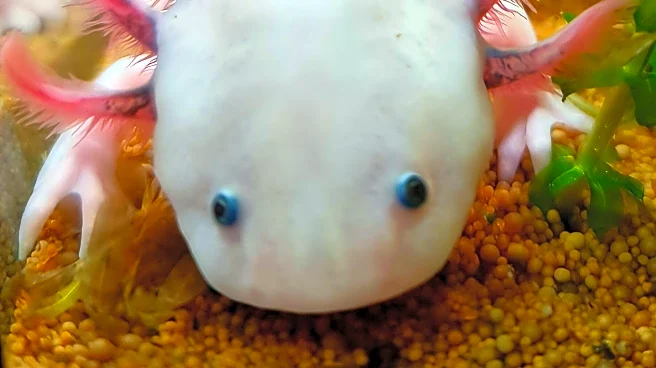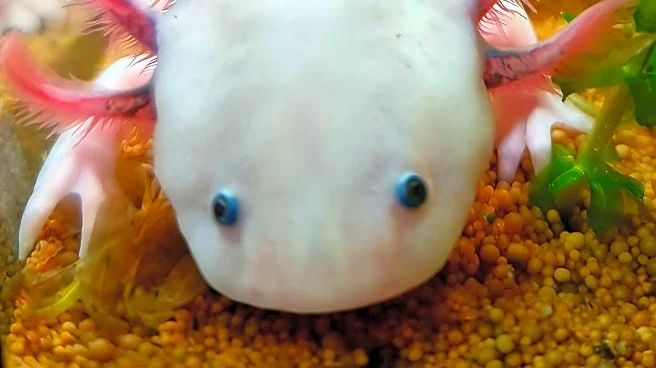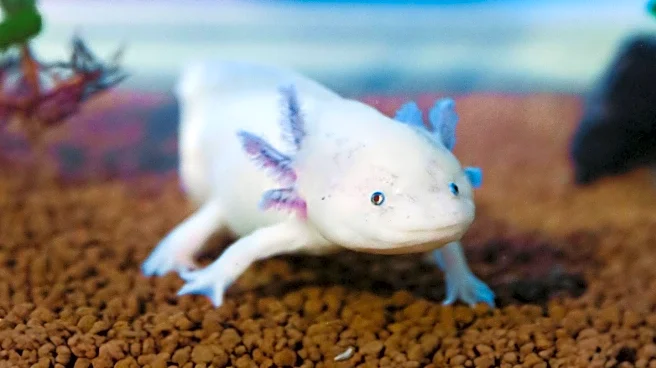What's Happening?
Axolotls, the unique amphibious salamanders native to Mexico City, have become a popular subject in children's literature. Known for their distinctive appearance, these creatures have captured the imagination of both children and adults. Publishers have responded to this trend by releasing a variety of axolotl-themed books, ranging from picture books to early readers. Notable titles include 'Axolotl and Axolittle' by Jess Hitchman and 'The Great Axolotl Escape' by John Sazaklis. The popularity of axolotls has been growing since they were declared endangered in 2006, and they have since appeared in various cultural contexts, including as characters in the game Minecraft and on Mexico's 50 peso note.
Why It's Important?
The surge in axolotl-themed books reflects a broader cultural fascination with these creatures, which are often seen as symbols of cuteness and uniqueness. This trend highlights the role of children's literature in raising awareness about endangered species and fostering a connection between young readers and the natural world. By featuring axolotls in engaging stories, publishers are not only capitalizing on their popularity but also educating children about conservation issues. This could lead to increased interest in environmental protection among young audiences, potentially influencing future conservation efforts.
What's Next?
The axolotl trend shows no signs of slowing down, with more titles expected to be released in 2026. As publishers continue to explore the appeal of axolotls, it is likely that these books will remain popular among children and educators. The ongoing interest in axolotls may also inspire further creative projects, such as animated series or educational programs, that could expand their reach and impact. Additionally, the trend may encourage other media to incorporate axolotls, further embedding them in popular culture.
Beyond the Headlines
The axolotl craze underscores a growing trend in children's media to feature animals that evoke strong emotional responses. This reflects a shift towards content that not only entertains but also educates and inspires empathy. The use of axolotls in literature may also prompt discussions about biodiversity and the importance of preserving unique species. As children learn about axolotls and their endangered status, they may become more aware of the broader environmental challenges facing the planet.











